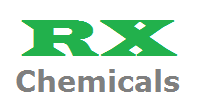
Battery DEIONIZED Water
For top up in inverter and all types of batteries also Add with coolant in radiator (as per ratio recommended) , and to keep stain free glass add in wiper tank of a car for cleaning windshield
Our product range is known for its quality, and finds widespread application in various sectors such as chemical & biological laboratories, operation theater machines, aquariums, households, industries and etc. In accordance with the requirements of clients, we can provide distilled water (Cold Process Technology) in safe packaging of various quantities. Our product range includes Distilled Water, Battery Distilled Water, Windshield Wiper Fluid, Distilled Water For Home, Industrial Water, SPA & Saloon Distilled Water, Radiator Coolant Water, Laboratory Water, Medicated Water, Aquarium Water and Saloon Distilled Water.
We manufacture and export a new and innovative range of products as per market demands, we provide tailor-made products as per Standards / requirements.
Different grades and types of distilled water offered by us is formulated employing highly advanced cold process technology.
Commercial Distilled Water:
-
Distilled Water 3 in 1 ( Distilled Water 3 In 1 can be used in:::-
For top up in inverter and all types of batteries
Add with coolant in radiator (as per ratio recommended)
Add in wiper tank of a car for cleaning windshield
- Aquarium Water
- Battery Distilled Water
- Windshield Wiper Water
- Distilled Water For Home
- Industrial Water
- Distilled water for Pathology Laboratory
- Radiator Coolant Water
- SPA & Saloon Distilled Water
MAINTENANCE SCHEDULE ::: The maintenance schedule given here is divided in daily, weekly, monthly and yearly maintenance. The actions to be taken, checks and recording required are given herewith.
A.DAILY MAINTENANCE
1. A daily general maintenance should include a check and record of the following :
2. Overall float voltage measured at the battery terminals
3.Charger output current and voltage
4.Specific gravity, voltage and temperature of pilot cells.
B.WEEKLY MAINTENANCE
A weekly maintenance should include all the items mentioned in “daily maintenance” and the following :
1. Check electrolyte level of all cells and if required, top-up with battery grade water conforming to IS 1069. Never use metal vessels for topping up because of the risk of electrolyte continuation and accidental short circuit.
2. Visually check the conditions of each cell and battery bank. If abnormal or very high amount of sulphation on the terminals or connectors are observed, take immediate action in removing them.
3.Visually check the cleanliness of battery, battery stands and battery room area for accessibility, cell integrity and acid leakage.
C.MONTHLY MAINTENANCE
1. A monthly maintenance shall include all checks listed under “daily” and “weekly” maintenance schedule and also the following:
2.Check and record specific gravity, voltage and temperature of all cells in the battery bank.
3.Adjustment of specific gravity by addition of battery grade water is to be done only after charging and under skilled supervision (Never use acid for this purpose unless specifically suggested by manufacturer). After adjustment of specific gravity, charge the battery at a voltage around 2.4 volts per cell for a period of 2 hours for mixing of the electrolyte properly.
D.QUARTERLY MAINTENANCE
A quarterly maintenance shall include all checks listed under “daily”, “weekly” and “monthly” maintenance schedule and also the following :
1. Check and record specific gravity, voltage and temperature of all cells in the battery bank.
2.If the specific gravity of most of the cells are found to be lagging by an average of 10 to 15 points, the battery bank would call for an equalizing charge at a current equivalent to 3% - 5% of its rated value for 6-10 hours to restore the state of charge to full..
3.The temperature of the electrolyte normally is higher than the ambient. But for a bank, unless it has undergone a discharge within previous 24 hours, the electrolyte temperature should lie within 3
5 deg. C higher than the corresponding ambient temperature. In case of a deviation from this range, the charger needs to be checked for its quality of power output in terms of the ripple contents in the charging voltage and current. Corrective action should be immediately taken to avoid any deterioration in the battery bank due to this anomaly
E.HALF YEARLY MAINTENANCE
A half yearly maintenance shall include all checks listed under “daily”, “weekly”, “monthly” and “quarterly”
maintenance schedule and also the following :
1.Remove all corrosion product and clean connector thoroughly. Use enough amount of petroleum jelly on the connectors to prevent farther corrosion and put back shrouds in place.
2. Check the tightness of fasteners on inter-cell, inter-row and inter-tier connections to prescribed torque values as suggested by manufacturer. If required, tighten the connections to the required torque value .
F.YEARLY MAINTENANCE
A yearly maintenance should include all items listed under 'daily', 'weekly' and 'monthly' maintenance schedule and also the following : Discharge the battery at C10 current for 10 hours followed by a constant current recharge.
The charging to start at the “starting rate” as mentioned in the product catalogue for the respective size till the cell voltage
reached 2.36 volts per cell followed by charging at “finishing rate” pertaining to the specific size of the battery as mentioned in manufacturer's catalogue. The charging to be stopped when the cell voltage and specific gravity readings are constant for four consecutive half hourly readings. The expected end-of-charge voltage is of the order of 2.7 2.75 volts per cell.
During charging it has to be ensured that a minimum Ah input of 125% of the previous discharged Ah is administered to the battery.
The temperature during charging should not increase beyond 450 C. In such cases, the charging to be stopped and the cells to be allowed to cool down till 400 C when the charging can be resumed. The timings are to be noted so that the duration of charge can be compensated accordingly to ensure that the minimum Ah input requirement is fulfilled. After the charging is over, gravity and level adjustments are to be carried out after a rest of 4 hour.
The battery bank, then, is to be given an equalisation charge at a current equivalent to 3% - 5% of rated C10 capacity for 12-24 hrs. The battery bank can be given back to the system after the equalising charge is over
.
b)GASES : Batteries can give off explosive gases. Keep sparks, flames and lighted cigarettes away from battery and battery room. Ensure connections are tight before switching on, using only insulated tools. Areas where batteries are kept or charged must be adequately ventilated.
c).ELECTRICITY :
e)ERECTION :
Erection and commissioning of batteries to be done in accordance with separate instructions provided by manufacturer.
CONDENSED INSTRUCTIONS
| Temperature | Float Voltage |
| <5 deg. C | 2.270.02 vpc |
|
200C to 350C
|
2.250.02 vpc
|
|
360C to 450C
|
2.230.02vpc |
BOOST CHARGING
Operate the charger in accordance with the separate charger instruction, so as to supplya charge current to the battery. The initial “starting rate” charging current can be any value up to two times the “finishing rate” of charge, as given in the Appendix. The voltage of the battery will rise as the battery becomes charged. When the battery voltage reaches a value equivalent to 2.36 volts per cell, the charge current should be limited to a maximum of the “finishing rate” of charge. Where automatically regulated charges are employed, the charge current may not be under manual control, but the current output of such charges should not greatly exceed the finishing rate of charge, when the cells are gassing. Charging should be continued, taking specific gravity and voltage readings on the pilot cell, at half hourly intervals, until the readings become sensibly constant over a period of 2 hour
PILOT CELL ::: Select one cell of the battery as a 'pilot cell. For batteries containing more than 60 cells, select one pilot cell
for each 60 cells. Any variations in specific gravity of the electrolyte in the 'pilot' cell(s) will be indicative of the state of charge
of the whole battery. Keep the electrolyte level between the red and green mark, preferably near the green mark, etched on the
transparent level indicator by adding distilled or deionised water when required. After topping up,
it is preferable to give the battery a charge for approximately ½ hour, above 2.3 volts per cell. This will mix the electrolyte and
prevent water from stratifying at the upper level.
5.GENERAL INFORMATION
1. Specific gravity: The specific gravity of the electrolyte in fully charged cells should be 1.200+/-0.005 at 270 C. During the course of years there may be a slight fall in the maximum specific gravity values obtainable at end of charge, but acid should never be added except on the recommendations of the manufacturer.
2.Topping up Due to evaporation, and gassing on charge, water is lost from the electrolyte, and the level gradually falls.
Water must be added at intervals to bring the electrolyte to the correct level. Do not allow the levels to fall below the red mark.
The water used for this topping-up operation must be pure and should be demineralised and conforming to IS 1069 Never use metal vessels for storing or dispensing the topping-up water.
Water should preferably be added below the surface of the electrolyte, by use of a rubber syringe or plastic funnel. This helps to mix the water with the electrolyte. It will also help to assist mixing by having the battery on charge, with all cells gassing, either during, or soon after topping-up.
3.Preservation Keep the battery and surrounding clean and dry.
Wipe down the cells with a clean soft cloth dampened with clean water, if necessary, a small amount of mild detergent may be added to the cleaning water to remove any greasy film. Ensure bolted connections are tight. Keep connectors, pillars and bolted connections covered with petroleum jelly for protection against corrosion. Should any corrosion of the connectors occur because of spilt acid etc. carefully remove corrosion products, thoroughly clean and neutralize with alkali solution or dilute ammonia.
Dry the affected parts and liberally coat with petroleum jelly to protect from further corrosion. Care should be taken to ensure that the neutralizing solution does not enter the cell.
4.Temperature correction The specific gravity of the electrolyte varies with temperature. Any reading observed on the hydrometer should therefore be corrected as follows: For every 100 , above 150 C, add 7 point (0.007 specific gravity) to the specific gravity as read on the hydrometer
Similarly, for each 100 C, below 150 C, subtract 7 point (0.007 specific gravity) as read on the hydrometer
The products that we manufacture and supply are as per the following standards:
- Indian Standard (IS) 1069, 1070, 7029
- International Standards Organisation (ISO) 3696 grade 1, 2, 3
- American Standards- A.S.T.M D-1193 grade & types 1,2,3,4
Battery DEIONIZED Water Distilled Water Battery grade manufacturer and supplier in Mumbai, Gandhidham, Visakhapatnam, Chennai, Ennore, Kolkata Haldia, Fujairah, Dubai, Sharjah, Abudhabi. RXSOL Brand Distilled Water Battery Grade largest manufacturer and supplier in Muscat Barka Ruwi Oman, Nairobi Kenya Sudan Yemen
Distilled Water, Battery Distilled Water, Windshield Wiper Fluid, Distilled Water For Home, Industrial Water, SPA & Saloon Distilled Water, Radiator Coolant Water, Laboratory Water, Medicated Water, Aquarium Water and Saloon Distilled Water.




